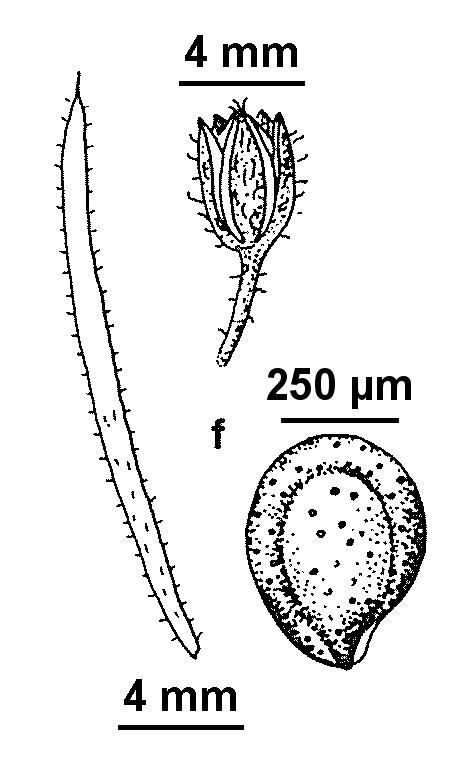Spergularia bocconei
(Scheele) Graebn.Annual or biennial; taproot slender; stems slender, prostrate to erect, 5–20(–30) cm long, glabrous only below. Leaves linear, mucronate or shortly awned, not fasciculate, fleshy, 10–30(–45) mm long, 0.4–1 mm wide; upper leaves more or less glandular-hairy; stipules not acuminate, 1.5–4 mm long, connate for less than half their length, dull-white, not silvery. Inflorescence often dense, with branches monochasial and racemose; pedicels not reflexed, filiform, mostly shorter than or equalling sepals and capsules, densely glandular-hairy. Flowers 6–10 mm diam.; sepals (2–)2.5–3.5(–5) mm long, green or purplish, the dense glandular hairs (0.15–)0.3–0.4(–0.5) mm long; petals usually shorter than sepals, white, or rose-pink inside; stamens (0–)2–5(–10). Capsules ovoid to subglobose, equalling or slightly longer than sepals; seeds 0.35–0.6 mm long, smooth to finely papillose, light grey-brown, unwinged. Flowers mostly Sep.–Dec.
LoM, MuM, Wim, VVP, VRiv, MSB, GipP, OtP, Gold, CVU, GGr, EGL, HNF. Also naturalised WA, SA, Qld, NSW, Tas. Native to western Europe and the Mediterranean region. A weed of gravelly, sandy or clayey, often salt-affected soils.
Very closely related to Spergularia rubra and difficult to distinguish without flowers and/or ripe capsules and seeds.
 Spinning
Spinning




